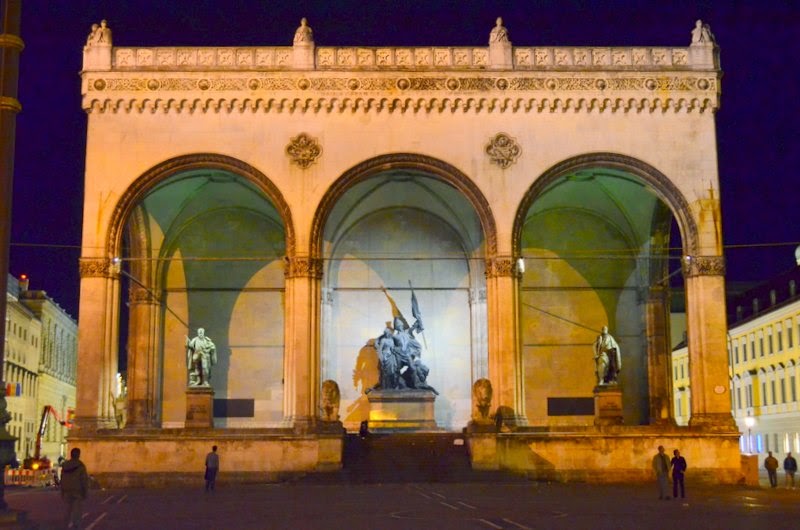Munich was one of our favorite cities to visit. Maybe because of the most tastiest beer at Hofbrauhaus. :-)
Few facts about Munich:
Munich is the capital city of Bavaria.
Within the city limits, Munich has a population of more than 1.4 million, making it the third most populous city in Germany.
Hofbrauhaus
Many visitors associate Munich foremost with its beer culture, which is epitomized in this world-famous beer hall. It is owned by state-owned Hofbräu brewery and provides space for around 2500 guest in the large beer hall on the ground floor and additional rooms on the upper floors and in its beer garden. [1]
Marienplatz
Marienplatz is a central square in the city centre of Munich, Germany. It has been the city's main square since 1158.
Residenz
Residenz is the former royal palace of Bavarian monarchs. It is the largest city palace in Germany.
Antiquarium is the oldest and largest room built by Duke Albrecht V as an exhibition room for his collection of antiquities. Later on the room was transformed into banquet room.
 |
| Antiquarium |
Black hall was constructed in late 16 century but derived its name later when the four black marble were installed. It was home for the court opera which used the room for rehearsals.
 |
| Black Hall |
 |
| Elector's bedroom |
 |
| Court bedroom |
 |
| Ceiling in the Prince Room |
Court Chapel was erected after 1600 under Duke Maximilian I. Virgin Mary is on the main painting.
Frauenkirche is the main church in Munich. It was built between 1468 to 1494 by Jörg von Halsbach and today it serves as the cathedral of the Archdiocese of Munich and Freising and seat of its Archbishop. The cathedral can hold approximately 20,000 people, and Catholic Mass is held regularly. The interior of the cathedral, which is among the largest hall churches in southern Germany, consists of the nave and two side aisles.
Theatinerkirche
Theatinerkirche, located at Odeonsplatz, was built in Italian high-Baroque style from 1663 to 1690, inspired by Sant'Andrea della Valle in Rome, designed by the Italian architect Agostino Barelli. His successor, Enrico Zuccalli, added two towers, originally not planned, and then finished the 71 meter high dome in 1690.
Around the city
 |
| Opera House |
 |
| At some cemetery |
 |
| Flower stands everywhere |
Food
 |
| Pork shank and sourkraut |
 |
| Bavarian Sauerbraten from the heifer with red apple cabbage and bread dumpling |


























































No comments:
Post a Comment